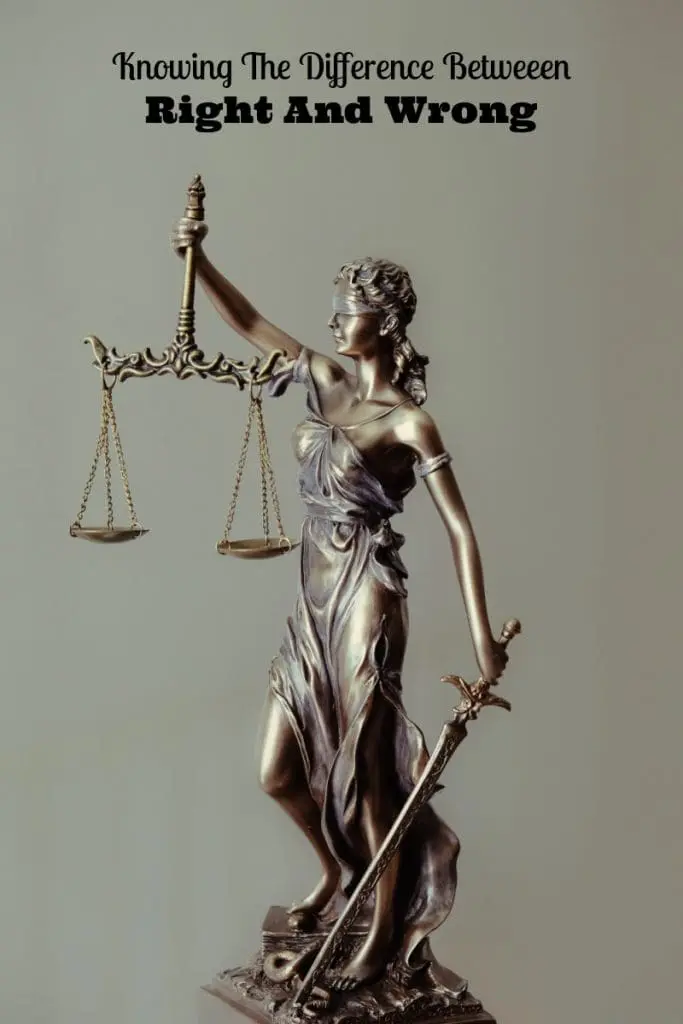When raising a child, we teach them so many things both through our words and through our actions. Often times, we don’t even think about teaching things that are nonetheless imparted through our daily activities. How to teach the difference between right and wrong is one of things that you do over a long period of time through both words and actions. It has to do with imparting moral principles and making ethical decisions. Knowing the difference between right and wrong is something that will help guide your child for the rest of their lives. It is important to give them a firm foundation as a child so the difference will be one they naturally feel in their gut throughout their lives.
How Do We Learn The Difference Between Right And Wrong?
Through Watching Behavior
Make sure that your child sees you making good decisions and modeling good behavior for them. For example, if you find that you accidentally took something from the store without paying for it, return and pay for it. If you accidentally hurt someone’s feelings, make sure that you apologize and try to make amends. Children learn a great deal from their parents about moral laws. Your behavior helps them figure out how they should behave and what is the right thing. They deserve a good role model. Kids should know that bad behavior does not mean they are a bad person. However, they should also know that a good person does not choose to make the same poor behavior choices repeatedly.
By Thinking Through Consequences
Young children do not really understand why they should not do everything that they want to do. You as the parent need to help them learn how to think outside of themselves and be aware of consequences. You might want to try to role play through different situations. If you see your child bullying someone else, stop them and later, ask how they would feel if someone did the same thing for them. My grandmother’s golden rule was always, “Do unto others as you would have them do unto you.” Choosing ethical behavior often involves knowing how your actions will effect others.
Receiving Punishment and Explanation
Though it is necessary to punish a child for things that they have done wrong, you should also sit down and make sure that they know why things are wrong. For example, if you catch a child taking money from your purse, make sure that they know why it was wrong. Otherwise, all that they really understand is that they should not get caught. Explain to them the fact that that was money that they did not earn, and that it would betray your trust. Help them to understand the need to make a moral judgement. Make sure you share your family values to help them determine what is right and wrong before they make poor choices. The punishment does not have to be severe but the first time they make a mistake but they need to understand that wrong choices will have negative results.
By Being Forgiven And Learning To Forgive
The thing to remember about children is that they are not perfect. After all, they are human being like the rest of us. They start out only with the information that you give them and that they absorb, and they understand things imperfectly. They may not always understand the difference between good things and bad things. Keep this in mind and be gracious when they make mistakes and are genuinely sorry. You can teach kids to be forgiving by being forgiving yourself.

How do you explain right and wrong to a child?
Explaining right and wrong to a child can be a delicate and important task. Here are some general steps you might consider:
- Keep it Simple: Use language that is appropriate for their age and understanding. For young children, simple concepts like “being kind,” “sharing,” and “helping others” can be a good start.
- Use Examples: Children often learn best through examples. You can use everyday situations to explain right and wrong. For example, you could say, “It’s not okay to hit your friend because it hurts them. We should use our words to solve problems.”
- Encourage Empathy: Help your child understand how their actions can affect others. Encouraging empathy can help them develop a sense of right and wrong based on how their actions impact others.
- Set Clear Expectations: Children need to know what is expected of them. Set clear and consistent rules, and explain the reasons behind them.
- Encourage Questions: Encourage your child to ask questions about right and wrong. This can help them develop a deeper understanding of the concepts.
- Be a Role Model: Children learn a lot by watching the behavior of adults. Be a good role model by demonstrating kindness, empathy, and respect in your own actions.
- Reinforce Positive Behavior: When your child demonstrates understanding of right and wrong or acts in a positive way, be sure to praise and reinforce that behavior.
It’s important to remember that teaching right and wrong is an ongoing process, and children will continue to learn and develop their understanding as they grow.
Knowing The Difference Between Right And Wrong
Take a moment to think about your child and their sense of right and wrong. Talking to the experts in your local area can help you decide on ways to keep your child on the straight and narrow. Remember that children need guidance and that they are always going to be learning and looking to you for more information. We all face moral dilemmas. They should know they can always come talk to you if they help to differentiate between right and wrong.
Related Posts:
Teaching Children Empathy- 3 Activities To Help


Shannon @ The Heavy Purse says
Great post and tips. Kids observe so much, more than we think! We have to make sure our actions match our words, beside they notice when they don’t.
Nikki Lee says
Only one rule is needed. Live right, and your kids will see. They learn more by seeing than by talking.
Help them to live right; help them to do what you do to live right.